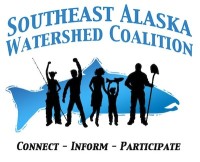
Identification of Potential Restoration Projects in Southeast Alaska
Recent SAWC Project: For the past three months SAWC has been working on identifying potential restoration sites in Southeast Alaska focusing on Haines and Skagway. It has been extremely insightful to learn about the areas that would classify for restoration as well as work with the community to identify these potential sites. For each site we have compiled site photographs, maps and project reports using GIS and Google Earth. We hope to continue this project in many other communities in Southeast Alaska. Here is an example of our Project Report Template and Potential Restoration Site Identification and Inventory Form for each site: Project Report Template Potential Restoration Site Identification and Inventory Form This project is in partnership with the US Fish and Wildlife Service, Takshanuk Watershed Council and Taiya…
